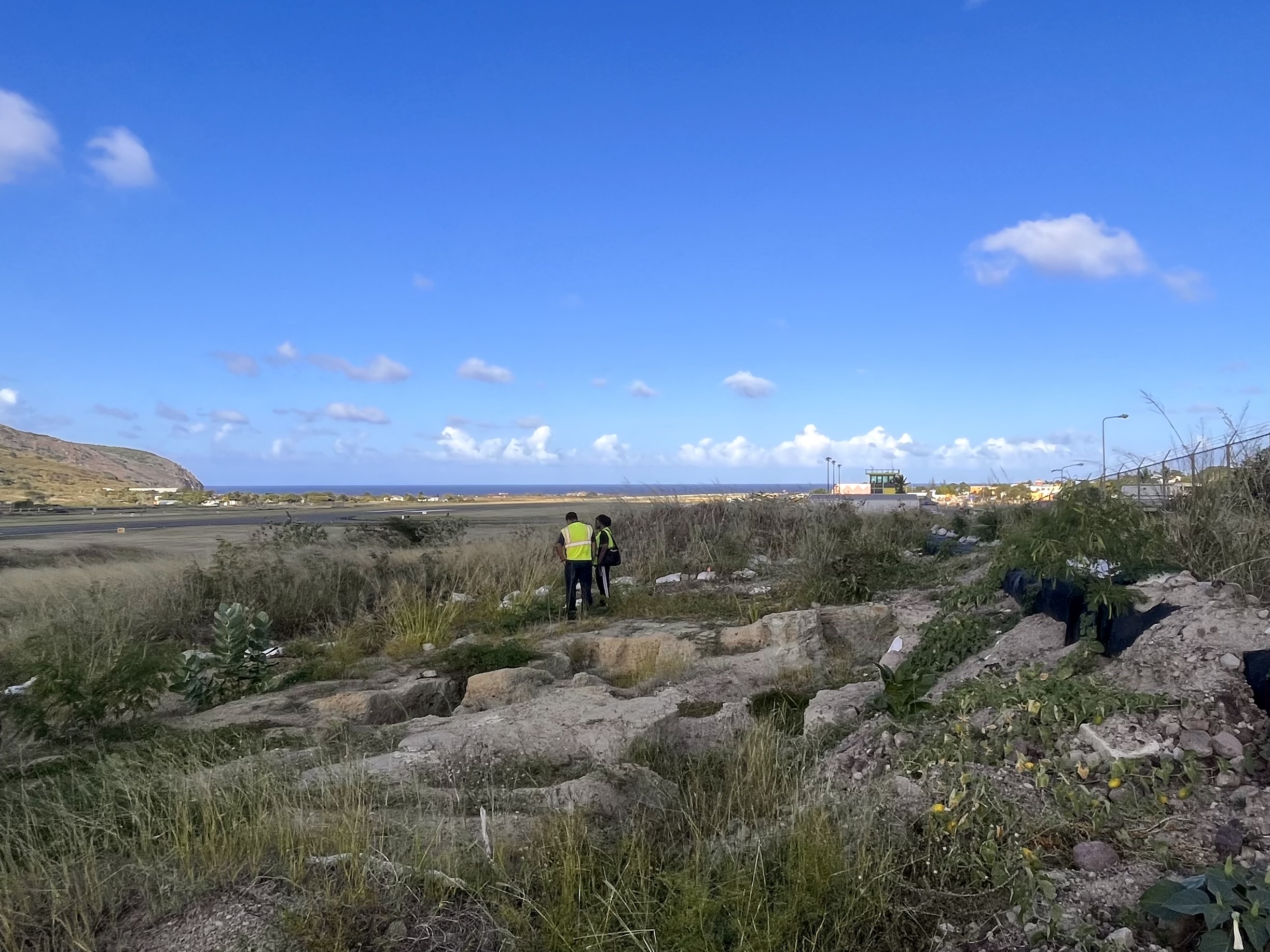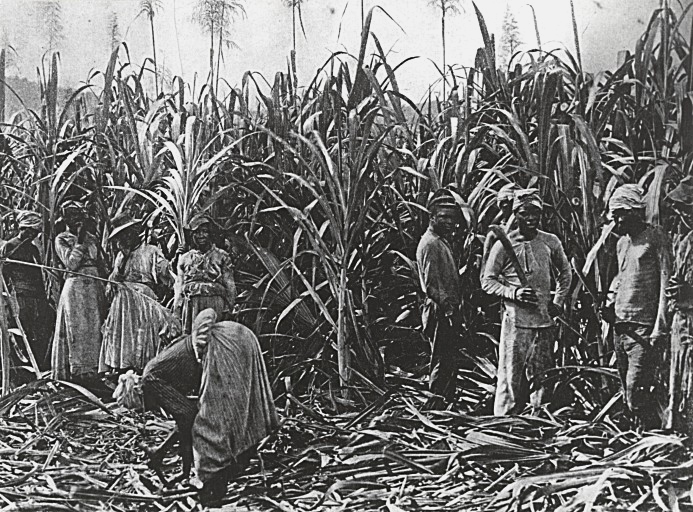|
Golden Rock Burial Ground
The Golden Rock African Burial Ground is an unmarked historical burial ground of enslaved African men, women and children located on the premises of the airport on Sint Eustatius, Dutch Caribbean in the ‘Cultuurvlakte’. The burial ground was part of the former Golden Rock plantation on the island. History Sint Eustatius was an important transit port in the trans-Atlantic slave trade due to its strategic location, deep harbor and system of free trade. The small island played a significant role in the transshipment of captured Africans to the British, French, and Spanish islands of the eastern Caribbean. There was no large plantation economy, but in the eighteenth century there were as many as 75 plantations on the island. The Golden Rock Plantation was one of the largest plantations of Sint Eustatius centrally located in between two elevated areas, Signal Hill and Little Mountain to the northwest and a dormant volcano, the Quill to the southeast. The name Golden Rock is derived ... [...More Info...] [...Related Items...] OR: [Wikipedia] [Google] [Baidu] |
Golden Rock Burial Ground St
Golden means made of, or relating to gold. Golden may also refer to: Places United Kingdom *Golden, in the parish of Probus, Cornwall *Golden Cap, Dorset *Golden Square, Soho, London *Golden Valley, a valley on the River Frome, Stroud#Golden Valley, River Frome in Gloucestershire *Golden Valley, Herefordshire United States *Golden, Colorado, a town West of Denver, county seat of Jefferson County *Golden, Idaho, an unincorporated community *Golden, Illinois, a village *Golden Township, Michigan *Golden, Mississippi, a village *Golden City, Missouri, a city *Golden, Missouri, an unincorporated community *Golden, Nebraska, ghost town in Burt County *Golden Township, Holt County, Nebraska *Golden, New Mexico, a sparsely populated ghost town *Golden, Oregon, an abandoned mining town *Golden, Texas, an unincorporated community *Golden, Utah, a ghost town *Golden, Marshall County, West Virginia, an unincorporated community Elsewhere *Golden, County Tipperary, Ireland, a village on the ... [...More Info...] [...Related Items...] OR: [Wikipedia] [Google] [Baidu] |
Sint Eustatius
Sint Eustatius (, ), also known locally as Statia (), is an island in the Caribbean. It is a special municipality (officially " public body") of the Netherlands. The island lies in the northern Leeward Islands portion of the West Indies, southeast of the Virgin Islands. Sint Eustatius is immediately to the northwest of Saint Kitts, and to the southeast of Saba. The regional capital is Oranjestad. The island has an area of . Travellers to the island by air arrive through F. D. Roosevelt Airport. Formerly part of the Netherlands Antilles, Sint Eustatius became a special municipality of the Netherlands on 10 October 2010. Together with Bonaire and Saba it forms the BES islands. The name of the island, "Sint Eustatius", is the Dutch name for Saint Eustace (also spelled Eustachius or Eustathius), a legendary Christian martyr, known in Spanish as ''San Eustaquio'' and in Portuguese as ''Santo Eustáquio'' or ''Santo Eustácio''. History The earliest inhabitants were C ... [...More Info...] [...Related Items...] OR: [Wikipedia] [Google] [Baidu] |
Dutch Caribbean
The Dutch Caribbean (historically known as the Dutch West Indies) are the territories, colonies, and countries, former and current, of the Dutch Empire and the Kingdom of the Netherlands in the Caribbean Sea. They are in the north and south-west of the Lesser Antilles archipelago. Currently, it comprises the constituent countries of Aruba, Curaçao and Sint Maarten (CAS islands), and the special municipalities of Bonaire, Sint Eustatius and Saba (BES islands). The term "Dutch Caribbean" is sometimes also used for the Caribbean Netherlands, an entity consisting of the three special municipalities forming part of the constituent country of the Netherlands since 2010. The Dutch Caribbean has a population of 337,617 as of January 2019. History The islands in the Dutch Caribbean were, from 1815, part of the colonies Curaçao and Dependencies (1815–1828) or Sint Eustatius and Dependencies (1815–1828), which were merged with the colony of Suriname (not considered par ... [...More Info...] [...Related Items...] OR: [Wikipedia] [Google] [Baidu] |
Atlantic Slave Trade
The Atlantic slave trade, transatlantic slave trade, or Euro-American slave trade involved the transportation by slave traders of enslaved African people, mainly to the Americas. The slave trade regularly used the triangular trade route and its Middle Passage, and existed from the 16th to the 19th centuries. The vast majority of those who were transported in the transatlantic slave trade were people from Central and West Africa that had been sold by other West Africans to Western European slave traders,Thornton, p. 112. while others had been captured directly by the slave traders in coastal raids; Europeans gathered and imprisoned the enslaved at forts on the African coast and then brought them to the Americas. Except for the Portuguese, European slave traders generally did not participate in the raids because life expectancy for Europeans in sub-Saharan Africa was less than one year during the period of the slave trade (which was prior to the widespread availability of qu ... [...More Info...] [...Related Items...] OR: [Wikipedia] [Google] [Baidu] |
Plantations Of Sint Eustatius
The plantations of Sint Eustatius (Dutch Caribbean) were primarily set up in the seventeenth and eighteenth centuries by European settlers. Workers on the plantations were obtained from human trafficking, and the proceeds primarily went back to the mother country. In the second half of the eighteenth century, trade became more of a priority to Sint Eustatius rather than the plantation economy. History The colonization of Sint Eustatius began in 1635 by Jan Snouck and other Zeelanders. In 1682, the island was sold to the Dutch West India Company (WIC), which owned it until its abolition in 1792. The patronage was in the hands of a group of merchants from Zeeland, the Netherlands, including Abraham van Peere and Pieter van Rhee. The first tobacco of Sint Eustatius was introduced on the market in Vlissingen in 1638. Around 1689, many plantation owners moved away due to repeated destruction and looting during takeovers by other colonial powers, often to nearby Saint Thomas. The plant ... [...More Info...] [...Related Items...] OR: [Wikipedia] [Google] [Baidu] |
Jay Haviser
Jay Bryant Haviser, Jr. (born November 21, 1955, Bartow, Florida) is an American-born archaeologist and anthropologist who has conducted archaeological fieldwork in St. Martin and Curacao.http://www.culturalheritageconnections.org/wiki/Jay_Haviser/ Haviser received a BA and a MS from Florida State University, US, and received a Ph.D. in 1987 from the Royal University of Leiden, T for a dissertation= "Amerindian Cultural Geography on Curaçao". His findings are published internationally and form the basis of our knowledge about the prehistory of these islands. Haviser is director of the St. Maarten Archaeological Center (SIMARC), and formerly was a researcher at Leiden University, the Netherlands and has formerly served as vice president of the International Association of Caribbean Archaeology. He lives in St. Martin. Works ''African Sites: Archaeology in the Caribbean'' ''African Sites: Archaeology in the Caribbean'' is a book by Jay Haviser, first published in 1999 by M ... [...More Info...] [...Related Items...] OR: [Wikipedia] [Google] [Baidu] |
UNESCO
The United Nations Educational, Scientific and Cultural Organization is a specialized agency of the United Nations (UN) aimed at promoting world peace and security through international cooperation in education, arts, sciences and culture. It has 193 member states and 12 associate members, as well as partners in the non-governmental, intergovernmental and private sector. Headquartered at the World Heritage Centre in Paris, France, UNESCO has 53 regional field offices and 199 national commissions that facilitate its global mandate. UNESCO was founded in 1945 as the successor to the League of Nations's International Committee on Intellectual Cooperation.English summary). Its constitution establishes the agency's goals, governing structure, and operating framework. UNESCO's founding mission, which was shaped by the Second World War, is to advance peace, sustainable development and human rights by facilitating collaboration and dialogue among nations. It pursues this objec ... [...More Info...] [...Related Items...] OR: [Wikipedia] [Google] [Baidu] |
Godet African Burial Ground
The Godet African Burial Ground is an unmarked historical burial ground for enslaved African men, women and children located at the southwest coast of Sint Eustatius, Dutch Caribbean. The burial ground was part of the former Godet plantation on the island. The Godet plantation There was no large plantation economy on the island, yet by 1750 there were 76 plantations. The burial ground was part of the former Godet Plantation. Plantation buildings are often depicted on maps, sometimes including the housing for the enslaved people. The burial grounds of the enslaved people are, however, seldom marked. It seems that the enslaved people were allowed to bury their dead at the least profitable ground or waste land of the plantations. The location of the Godet Afrikan Burial Ground is a good example of this as it is situated at the edge of a cliff. Location near the Waterfort The Godet African Burial Ground is located just north of the fortress Amsterdam also known as the Waterfort. ... [...More Info...] [...Related Items...] OR: [Wikipedia] [Google] [Baidu] |
Cemeteries In The Caribbean
A cemetery, burial ground, gravesite or graveyard is a place where the remains of dead people are buried or otherwise interred. The word ''cemetery'' (from Greek , "sleeping place") implies that the land is specifically designated as a burial ground and originally applied to the Roman catacombs. The term ''graveyard'' is often used interchangeably with cemetery, but a graveyard primarily refers to a burial ground within a churchyard. The intact or cremated remains of people may be interred in a grave, commonly referred to as burial, or in a tomb, an "above-ground grave" (resembling a sarcophagus), a mausoleum, columbarium, niche, or other edifice. In Western cultures, funeral ceremonies are often observed in cemeteries. These ceremonies or rites of passage differ according to cultural practices and religious beliefs. Modern cemeteries often include crematoria, and some grounds previously used for both, continue as crematoria as a principal use long after the interment areas h ... [...More Info...] [...Related Items...] OR: [Wikipedia] [Google] [Baidu] |
History Of Slavery
The history of slavery spans many cultures, nationalities, and religions from ancient times to the present day. Likewise, its victims have come from many different ethnicities and religious groups. The social, economic, and legal positions of enslaved people have differed vastly in different systems of slavery in different times and places. Slavery has been found in some hunter-gatherer populations, particularly as hereditary slavery, but the conditions of agriculture with increasing social and economic complexity offer greater opportunity for mass chattel slavery. Slavery was already institutionalized by the time the first civilizations emerged (such as Sumer in Mesopotamia, which dates back as far as 3500 BC). Slavery features in the Mesopotamian '' Code of Hammurabi'' (c. 1750 BC), which refers to it as an established institution. Slavery was widespread in the ancient world in Europe, Asia, Middle East, and Africa. It became less common throughout Europe during the Ea ... [...More Info...] [...Related Items...] OR: [Wikipedia] [Google] [Baidu] |
Islands Of The Netherlands Antilles
The Dutch Caribbean (historically known as the Dutch West Indies) are the territories, colonies, and countries, former and current, of the Dutch Empire and the Kingdom of the Netherlands in the Caribbean Sea. They are in the north and south-west of the Lesser Antilles archipelago. Currently, it comprises the constituent countries of Aruba, Curaçao and Sint Maarten (CAS islands), and the special municipalities of Bonaire, Sint Eustatius and Saba (BES islands). The term "Dutch Caribbean" is sometimes also used for the Caribbean Netherlands, an entity consisting of the three special municipalities forming part of the constituent country of the Netherlands since 2010. The Dutch Caribbean has a population of 337,617 as of January 2019. History The islands in the Dutch Caribbean were, from 1815, part of the colonies Curaçao and Dependencies (1815–1828) or Sint Eustatius and Dependencies (1815–1828), which were merged with the colony of Suriname (not considered part of ... [...More Info...] [...Related Items...] OR: [Wikipedia] [Google] [Baidu] |

.jpg)



